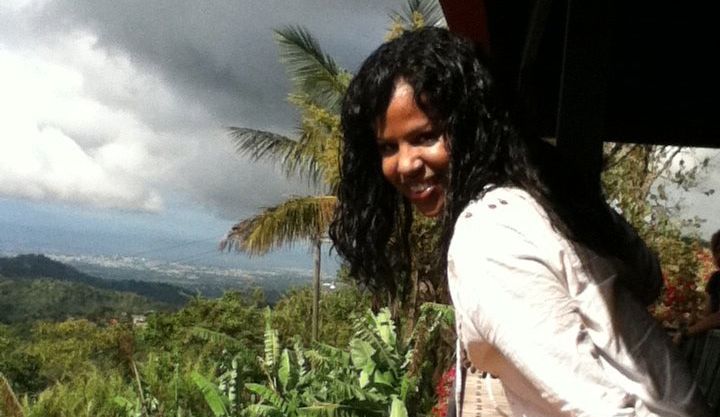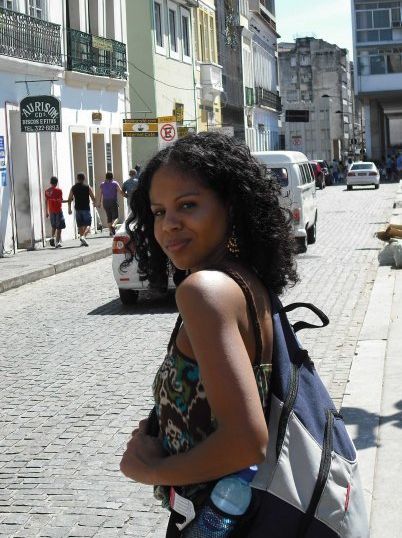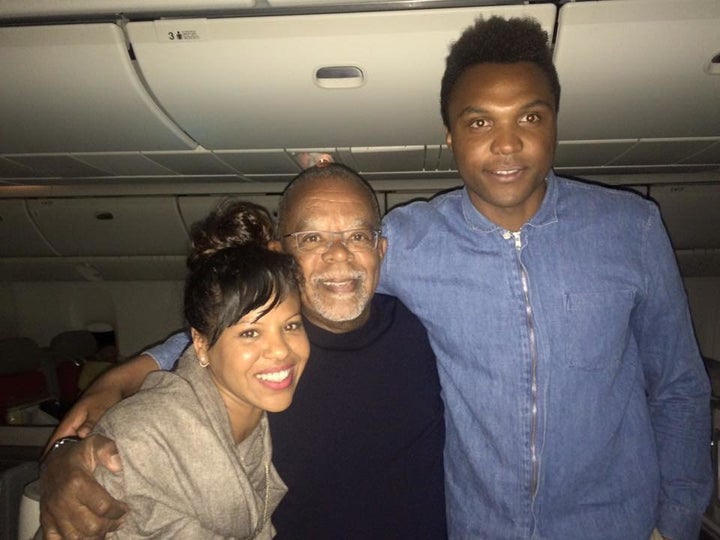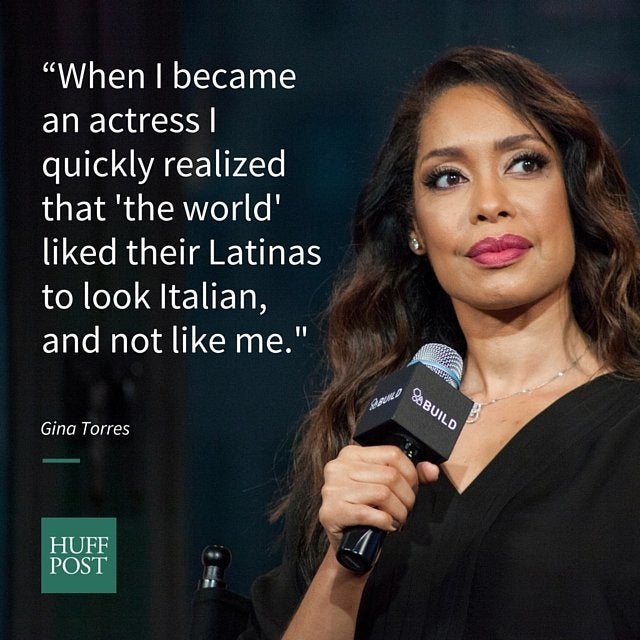
For Black Latinx in the U.S., bicultural, bilingual ― if they are lucky ― and born to immigrant parents, there is no motherland.
Though 25 percent of U.S. Latinos self-identify as Afro-Latino, we are not always made to feel at home in our own country. To be Latinx in the U.S. is to encounter xenophobic rhetoric from the top of our nation’s political leadership down to its base. To be black Latinx is to discover that xenophobia layered with anti-black rhetoric brews even among our own ethnic group.
Scholars Miriam Jiménez Román and the late Juan Flores consider W.E.B. Du Bois when describing the experience of the Afro-Latino in the U.S. as a triple consciousness — an awareness of being black, Latino and American. It is an elastic awareness, a way of moving in the world that has been woefully underexplored in America and in Spanish-language media and entertainment.
As an Afro-Latina, I often wondered: Where are my people? Where are those who crave mangú for breakfast, a Cuban sandwich for lunch and tres leches dessert? Where are those who love the “One Day at a Time” reboot with a Latin cast but winced when Lydia, played by Rita Moreno, repeats with conviction, “Cubans are white!” Didn’t abuela dance to Celia Cruz every morning as she made breakfast?
As soon as I could, I journeyed far from New Jersey to find my people. I looked for my kindred in the Dominican Republic, in Brazil, in Spain and in the maternal monolith I once imagined Africa to be.
I was looking for that mythical interstitial place where my blackness and Latinidad could peacefully coexist. This is what I found.

Dominican Republic
My parents brought me to visit family in Puerto Rico and the Dominican Republic nearly every year as a child. What I learned from these early travel experiences was that the two ethnic groups were distinct both racially and culturally.
“We tried to bathe you in bleach but you’re still black,” my Puerto Rican grandmother would joke. The tenderness of her delivery made it difficult to reconcile feelings of exclusion and growing insecurity about the authenticity of my Latinidad.
Puerto Rico, with 80 percent of its population self-identifying as white, could not be my motherland.
Dominican Republic, with a 90 percent Afro-Latino population, became my first mecca.
“'We tried to bathe you in bleach but you’re still black,' my Puerto Rican grandmother would joke.”
In my late 20s, I decided to return to the island to volunteer as a teacher in a community with a high poverty rate. My students sniffed me out as a gringa on the very first day of school. I communicated in fractured Spanish, using my brown skin to camouflage my all-American white savior complex.
Like many Afro-Latinos from the U.S. who choose to visit their parents’ birthplace, I found the hopscotch between racism, colorism and privilege exhausting.
I could see the African diaspora writ across the skin of the people in the Dominican Republic, but I could not find it in in the country’s museums and other cultural institutions. In her work Black Behind the Ears, Ginetta E.B. Candelario exposes the erasure of African influences on Dominican culture in El Museo del Hombre Dominicano for a more palatable Taino “indigenist national imaginary.”
Here, I could flatiron my hair and be fearlessly brown — but to be black with a pajón, I had to look to other motherlands.
Brazil
If not to the Dominican Republic, where else could I go to revel in my Afro Latinidad?
My black cosmic compass pointed south to the largest concentration of African diaspora — Brazil.
Brazilians don’t generally identify as Latino, but the historical development of the country is akin to that imagined space with debatable borders called Latin America.
Salvador da Bahia, with 80 percent of its population being Afro-Brazilian, was the next stop in my search for multiracial kinship.
I went to a Daniela Mercury concert on one of my first few nights in Salvador nearly 10 years ago. The crowd was an undulating mass of Brazilians of every shade of the human spectrum. I felt part of something truly post-colonial, if theory had a feeling. Mercury was fierce too. Her energy was inexhaustible and contagious. Between songs, she placed a fist to her heart and said, “I am black.”

Huh? Clearly she was white with blond hair touched by sun-kissed highlights. “I am Baiana,” she said, referencing her birthplace with a nod to the Afro-Brazilian women of Bahia, who don traditional white dresses and head wraps that harken back to Brazil’s colonial period. “My people are black. We praise the Orishas. We are all black!”
Mercury was essentially saying she was black by circumstance or black by association, perhaps even culturally black. The crowed roared back a resounding Yes, we are all black!
The rest of my trip, with encounters of institutional and everyday racism in Salvador, would prove otherwise. In Salvador, the racial divide was outlined in bold. Here, I could be black and wear my hair natural in spheres of saturnalia, but the African diaspora disappeared on television, in posh neighborhoods, fashionable hotels and pricey tourist shops. I would find them again in statistics, at the low end of the education, wealth and political spectrum.
Today, vigils for Rio de Janeiro’s Afro-Brazilian activist councilwoman Marielle Franco stand as a reminder of how precarious, even deadly, it can be to embody blackness in Brazil.
Spain
The Latino tripartite of Spanish, Native American and African roots — la raza cósmica, as Mexican philosopher José Vasconcelos phrased it — meant that Iberia, with its language forever etched on my tongue, could be a motherland. I didn’t visit Spain thinking it would be a sanctum for black Latinos. It was the hearth of this natal tongue, or the paternity of my Spanglish, that called for reconocimiento. And so I went.
“My melanin marked me as either a domestic servant or a sex worker — or both.”
But in Spain I was a prostitute. I could feel disapproving eyes on me as I walked with a blond, blue-eyed male friend. The eyes followed me even when I walked the streets of Seville with a white female friend. My melanin marked me as either a domestic servant or a sex worker — or both.
Patricia A. Fitzpatrick examines the portrayal of black Dominican women in her work La Dominicana: Images of the Dominican Immigrant in Contemporary Spanish Film. Lorgia García-Peña also studies the experience of the black Dominican in Europe. My own experiences traveling in Europe would yield similar conclusions: the mythologized hyper-sexuality of the Afro-Latina is branded on her skin upon export.
Africa
From Spain, I took the ferry to Morocco. When I stepped onto land, my friend turned to me and said, “How does it feel to return to your mother country?” I found it interesting that this same question wasn’t posed when we were back in Spain.
And yet, I did expect to feel something magical, something maternal. The whole of Africa was supposed to welcome me into her bosom. Hadn’t it stopped in time when my ancestors were stowed away on slave ships and dropped off in Caribbean ports?

I had always — as many Americans tend to do — conceived of Africa as a whole, romanticizing the continent as one heart that beats across centuries waiting for the return of its diaspora in Latin America, the return of 150 million black souls.
My return to Africa was about as successful as Marcus Garvey’s Black Star Line. I didn’t find my kin in Tangier. In South Africa, I didn’t find them in Johannesburg and damn sure didn’t find them in Cape Town. In none of these places could I be both black and Latina. In Stellenbosch, just being black was an oddity.
Africa was not my motherland. And it’s time I got over my mommy issues.
Finding Home
For Afro-Latinx of the U.S., there is no place from which to return. We are like magical black unicorns no one knows exist or endeavor to acknowledge. Even the term Afro-Latino is contentious, a relatively new denomination heavy with the baggage of colonialism.
With no exact point on the color spectrum to denote who can claim Afro Latinidad, identification as an Afro-Latinx can leave some folks feeling about as authentic as Rachel Dolezal. It’s a matter that played out on the political stage last year when Rep. Adriano Espaillat (D-N.Y.), already a member of the Congressional Hispanic Caucus, sought to join the Congressional Black Caucus but was met with resistance as his race and ethnicity came under scrutiny.
While the relationship between Afro-Latinos and African-Americans seems fraught with tension, it is also one that is healing as recognition of Afro Latinidad gains mobility in the U.S., and Afro-Latinos recognize movements like Black Lives Matter are battlegrounds that include and benefit them as well.
Our plurality is not our deficiency — it is our fortitude and great fortune. As Americans, black people and Latinx, theory of true globalism is writ across our DNA. So let us leave footprints around the globe, accepting that home is everywhere and nowhere.
Maria is a freelance writer and associate lecturer at Goldsmiths University of London.

